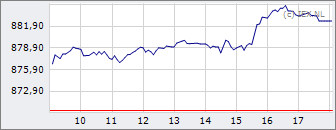Direct naar Forum

|
AEX
870,27
-3,75
-0,43%
18:05
|
|

|
|

|
Germany40^ |
17.931,00
|
-0,87%
|
|

|
BEL 20 |
3.857,94
|
-0,67%
|
|

|
Europe50^ |
4.952,68
|
-0,75%
|
|

|
US30^ |
38.124,13
|
-0,60%
|
|

|
Nasd100^ |
17.428,55
|
-0,55%
|
|

|
US500^ |
5.044,94
|
-0,54%
|
|

|
Japan225^ |
37.725,14
|
-0,72%
|
|

|
Gold spot |
2.332,03
|
+0,69%
|
|

|
EUR/USD |
1,0730
|
+0,30%
|
|

|
WTI |
83,75
|
+1,03%
|
|
#/^ Index indications calculated real time, zie
disclaimer